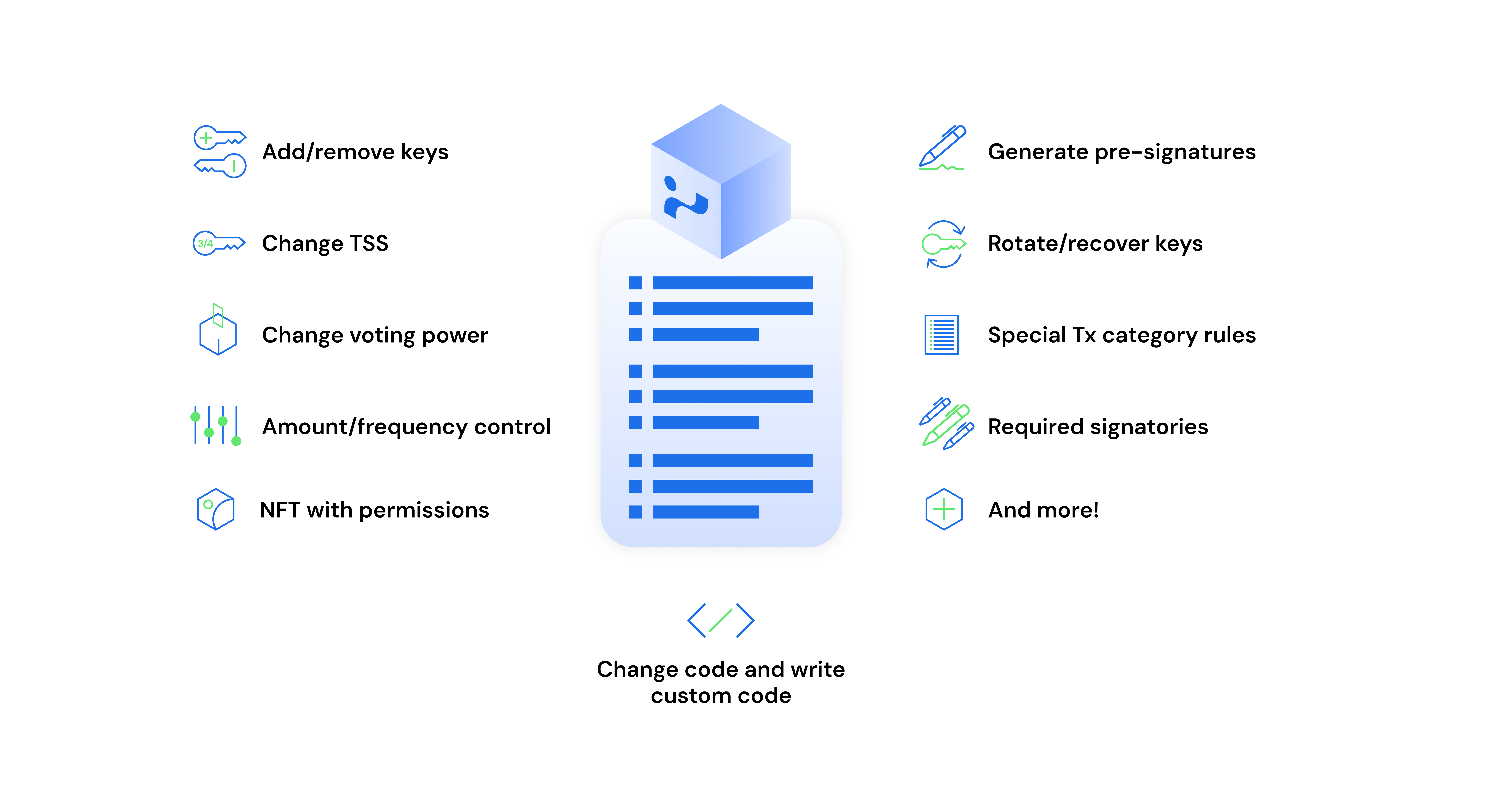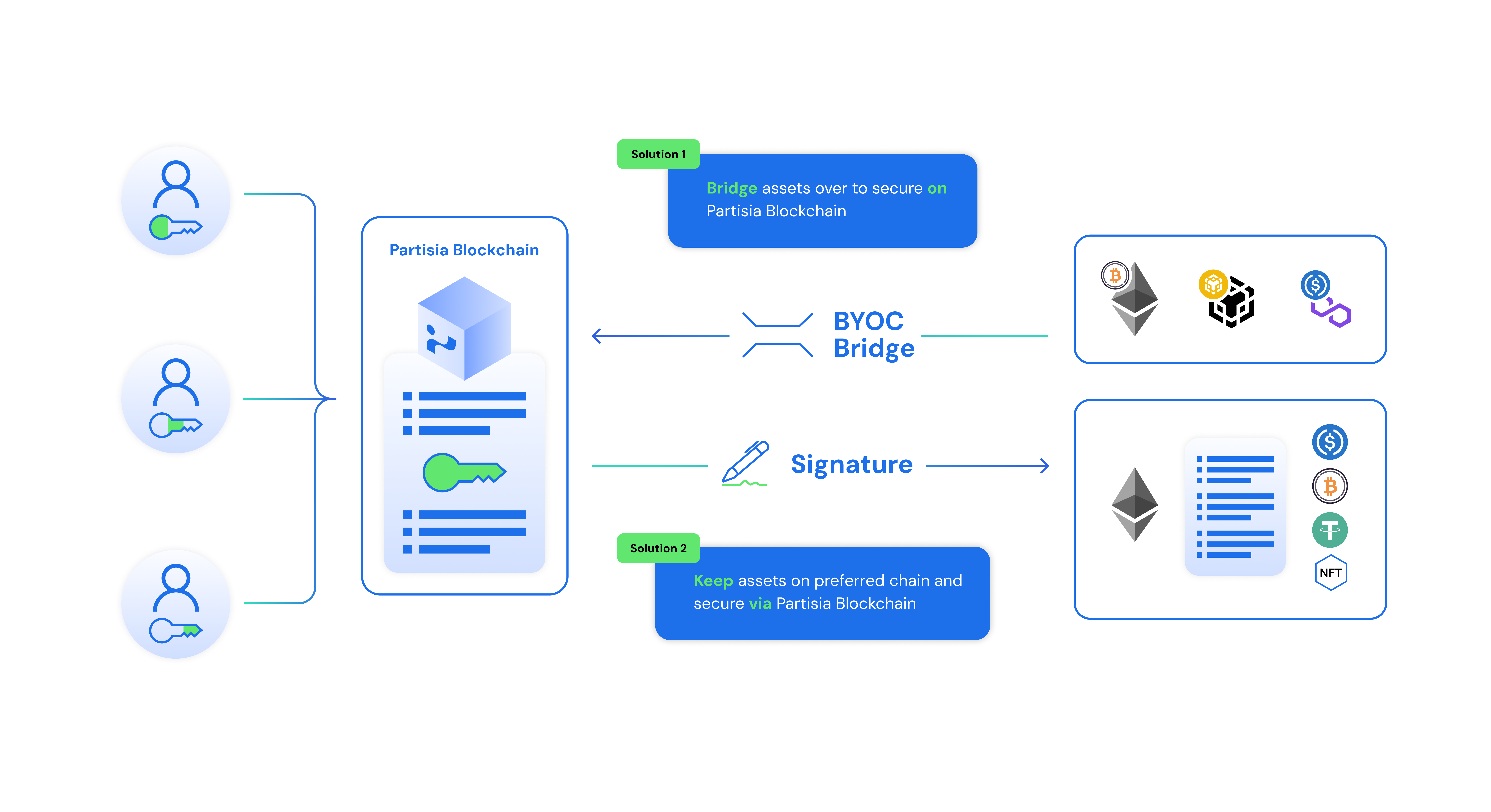Welcome to our rundown of the fourth day at Davos. We had another busy day filled with sessions and meetings. Below are the main themes and highlights for this penultimate day:
Cross-chain liquidity is essential for the efficient functioning of digital assets and decentralized finance (DeFi) markets. Partisia Blockchain Co-Founder Brian Gallagher spoke about the necessity of multichain solutions, like our just-yesterday-released MOCCA (MPC On-Chain Custody Advanced) solution. This is a programmable, decentralized, multichain custody solution that makes custody of digital assets significantly easier. Here, as was discussed on the panel, it is important that users be able to bridge assets on their preferred blockchains, making blockchain agnostic products key. The panelists also discussed important topics like AML, regulation, and protocol interoperability. What stood out was that regulators worldwide are adapting to the realities of DeFi and revisiting existing legislations to facilitate the adoption of new class of assets.
CBDCs and stablecoins have been a key part of discussions around cryptocurrencies over the past year, both positive and negative. Yet, as many nations have already launched or are planning to roll out CBDC pilots and the world is entertaining cashless societies, how CBDCs and stablecoins can co-exist alongside one other to increase financial inclusion needs to be considered. The panel on these two items was sweeping, considering regulation, stability, trust, and even collaboration between stablecoins and CBDCs. A certain fact is that more central banks will pilot CBDCs in the coming years.
One of the threads throughout the World Economic Forum (WEF) has been trust, and related security. Today, we attended WEF’s session on navigating cybersecurity. Something particularly important is that, according to WEF, 43% of organizational leaders estimate that in the next two years they will experience a damaging cyber-attack. The sentiment in this session was that cybersecurity is a collective responsibility and blockchain technology has a greater role to play.
Stay updated: Website • X • Discord • Telegram • LinkedIn • Facebook • Instagram • GitLab • Medium • YouTube
Welcome to our rundown of the third day at Davos. Today, besides meetings and attending sessions, we launched our very own decentralized, programmable, multichain and multiparty computation (MPC) on-chain product: MPC On-Chain Custody Advanced solution. In short – MOCCA. A custody milestone. This slated nicely into the day’s big themes:
Crypto markets were a key point of focus. Market-making and its intersection with algorithmic trading, market makers’ roles in price stability and volatility mitigation, and emerging trends were discussed. Our announcement of our MOCCA (MPC On-Chain Custody Advanced solution) during our keynote address highlighted how a decentralized, programmable, and multichain solution can redefine securing digital assets and make custodial management significantly easier. A need particularly relevant with the recent spot Bitcoin approvals by the US SEC.
Security, privacy, and transparency were the next major themes. This is reflected in the World Economic Forum’s (WEF) main focus for this year “Rebuilding trust” by honing on the fundamental principles fueling it, specifically transparency, consistency, and accountability. Panelists spoke on the importance of balancing transparency, security, and privacy in decentralized systems—a need fulfilled by our MOCCA product, alongside regulatory oversight. The main takeaways of which were that the industry needs infrastructure that will enhance transparency and help it widen its use.
Lastly, the financing side of the market was point on center stage. Contributors and founders gave an overview of their liquid crypto underwritings, the role of trading platforms in liquidity provision, and risks. The key takeaways were that liquid assets can offer contributors significant upside while mitigating much of the risk normally associated with financing in the asset class and the importance of technology, which facilitates trust between multiple parties.
We also had many meetings and attended thought-provoking sessions, such as WEF’s session on the risks and opportunities artificial intelligence (AI) brings into our daily lives. The Wall Street Journal’s session on managing risks, technology and compliance echoed our firm belief that tech plays a critical role in managing risks.
Stay updated: Website • X • Discord • Telegram • LinkedIn • Facebook • Instagram • GitLab • Medium • YouTube
DAVOS, 17 JANUARY 2024. Today in Davos, Partisia Blockchain unveiled its latest product – MOCCA (MPC On-Chain Custody Advanced solution). The MOCCA solution revealed during the World Economic Forum is a decentralized and fully programmable multichain custody solution designed to redefine the landscape of securing digital assets and ease custodial management.
The key differentiators of MOCCA from the existing custody solutions are its decentralized and enhanced programmability through smart contracts, blockchain agnostic multichain functionality, advanced security and compliance, and configurable privacy.
Peter Frandsen, Chief Technology Officer at Partisia Blockchain, says:
“MOCCA solution marks a significant milestone in the evolution of decentralized custody; it addresses the current limitations of traditional smart contracts and centralization. MOCCA empowers institutions and organizations with genuine decentralization, advanced programmability and the flexibility to secure digital assets across multiple chains. Backed by our decades-long expertise in multiparty computation (MPC), this product is our commitment to delivering cutting-edge solutions that redefine the standards of security, compliance, and innovation in the blockchain space.”
Partisia Blockchain’s latest MOCCA product addresses the limitations of inflexible and centralized custody solutions, offering genuine decentralization while providing full programmability. This is especially beneficial for institutions, decentralized autonomous organizations (DAOs), wallet providers and exchanges seeking trustless collaboration on securing digital assets.
The fully programmable nature of MOCCA’s custody smart contracts enable policies such as the addition or removal of signers, modification of threshold signature schemes and voting powers, integration of NFTs with special permissions, implementation of specific rules for transaction categories and much more.
Users can choose to bridge assets to Partisia Blockchain or secure assets on their preferred blockchains, offering flexibility and choice. Deployment is swift and cost-effective, directly on-chain, with customizable templates and tools. The MOCCA solution is designed to be blockchain agnostic, relying on MPC technology independent of protocol support.
Backed by 35 years of MPC research, Partisia Blockchain’s newest MOCCA solution ensures security and compliance. Advanced features, such as off-chain signing and key decentralization contribute to safeguarding substantial funds against potential threats. Public blockchains enable automatic key rotation and adjustable transparency levels, ensuring robust protection against attacks. Partisia Blockchain’s MOCCA goes beyond standard custody offerings by introducing security-audited standard policies and allowing for arbitrary code logic.
MOCCA deploys on public blockchains where its code and state are visible. However, key shards are exclusively generated and stored by users or MPC clusters, and then submitted to the decentralized MPC protocol. This allows participants to actively engage in governance and sign transactions directly on-chain—a significant advantage over commonly used TSS protocols, which are challenging to modify once deployed.

MOCCA Roadmap
Partisia Blockchain’s MOCCA represents a paradigm shift in custody solutions, offering unparalleled decentralization, security, ease and programmability. The solution is poised to meet the diverse needs of institutions and organizations navigating the complexities of managing digital assets in today’s dynamic landscape.
About Partisia Blockchain: Partisia Blockchain brings unparalleled opportunities by empowering privacy-preserving, interoperable and sustainable innovation for fairness and transparency. It fuels the most secure and efficient networks to solve global problems. Distilled with 35 years of rigorous research, Partisia Blockchain future-proofs solutions, solves tomorrow’s challenges by powering fair, secure, distribution of benefits. While preserving privacy and confidentiality, it brings accountable, transparent and decentralized governance. Learn more: www.PartisiaBlockchain.com
Stay updated: Website • X • Discord • Telegram • LinkedIn • Facebook • Instagram • GitLab • Medium • YouTube